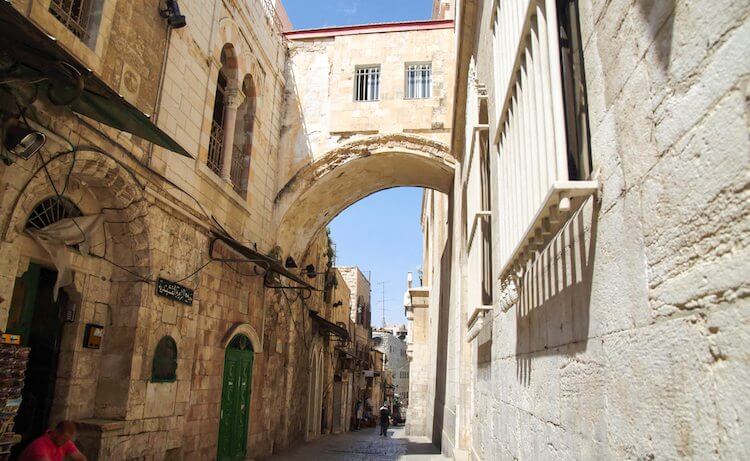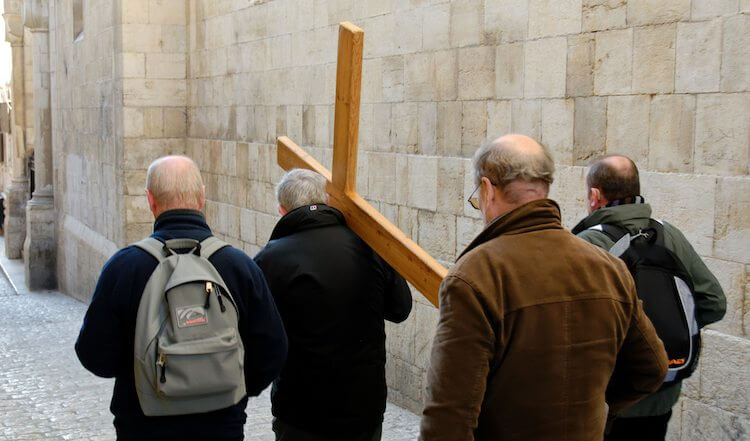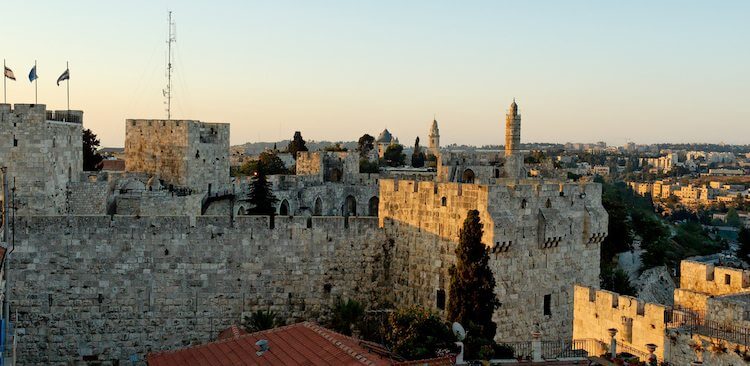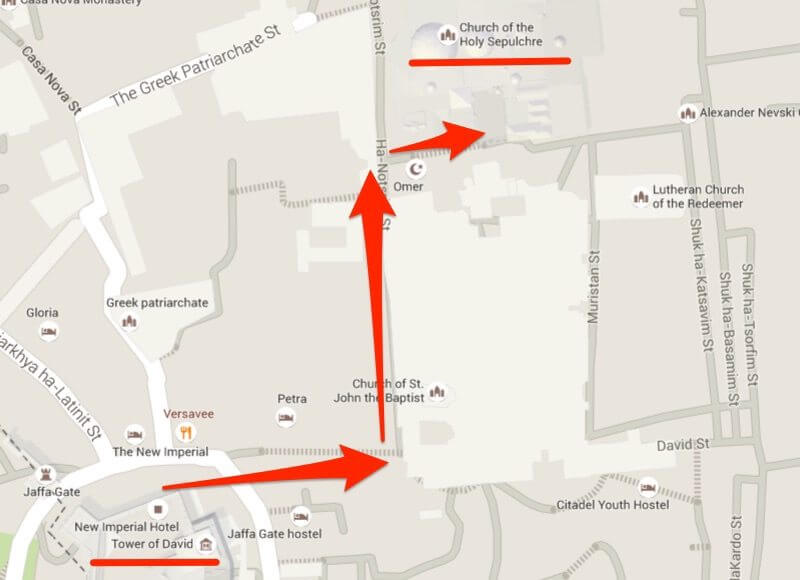It happens most times I’m in Jerusalem. I hear the question. “You’re telling me this isn’t the true Via Dolorosa, the “Way of Suffering” Jesus walked with His cross from Pilate’s Praetorium to Calvary? Then where is it?”

(Photo: The Ecce Homo arch spans the Via Dolorosa. Courtesy of the Pictorial Library of Bible Lands)
The Via Dolorosa of today marks an exercise in faith more than fact, and its stops or “stations” reflect Catholic tradition more than history. Popularized by Sandi Patti’s hit song in 1991, the Via Dolorosa also attracts the veneration of Protestant pilgrims who journey to Jerusalem.
There’s just one problem. The true path to the cross was in a completely different place.
The Wandering Path of the Via Dolorosa
As early as the Byzantine period in the 4th century, Christians have venerated Jesus’ walk to the place of His crucifixion.
- The Byzantines began on top of the Mount of Olives, stopped at the Garden of Gethsemane, and meandered along the approximate present route with no claim to historical accuracy.
- The Latin churches in the Middle Ages provided two alternative routes which started from two different churches—one north of the Temple Mount and the other on Mount Zion.
- Between the 13th-18th centuries, a number of devotional walks and stops—or “stations”—came to commemorate the events of Jesus’ walk to the cross.
- The present route and its stations only became fixed in the 19th century.

(Photo: Man carrying cross on Via Dolorosa. Courtesy of the Pictorial Library of Bible Lands)
Even though the gospels refer only to two events along the Via Dolorosa—Simon of Cyrene carrying the cross and Jesus’ statement to the daughters of Jerusalem (Luke 23:26–33)—tradition often trumps history.
The Starting Point Determines the Route
The location of the modern Via Dolorosa owes its identification to devotion and tradition rather than history. The same is true with the nearby Ecce Homo Arch and the Monastery of the Flagellation.
The confusion occurs because many assume Pontius Pilate judged Jesus at the Antonia Fortress, which stood at the northwest corner of the Temple Mount. Several facts make this unlikely:
- Scripture says Pilate judged Jesus in the “Praetorium,” the governor’s official residence (Mark 15:16; John 18:28).
- Josephus indicated that the Roman governor resided in Herod the Great’s palace—the Tower of David Citadel beside today’s Jaffa Gate—and set up his judgment seat before it (Wars, 2.14).
- Philo affirms that Pilate stayed in the palace—not the Antonia (Leg. in Caim, 38, 39).

(Photo: The Citadel where Pilate judged Jesus. Courtesy of the Pictorial Library of Bible Lands)
The site of Herod’s palace and Pilate’s residence today house the David Citadel museum, which offers an unparalleled history of Jerusalem and a microcosm of Israel’s history.
The Historical Via Dolorosa
The true path of Christ to the cross would have begun near the “Tower of David” Citadel (by the Jaffa Gate) and roughly followed David Street and Christian Quarter Road toward the Church of the Holy Sepulchre.

(Map: Approximate route of the true Via Dolorosa)
Want to walk the (approximate) true Via Dolorosa? Thanks to Google Maps, you can—almost. With the map above as a guide, click your way east along the David Street shops, north on the Christian Quarter Rd., and right on St. Helena Rd. to the Church of the Holy Sepulchre. (Google Maps stops you at St. Helena Rd.; another option is to continue on David St. to Muristan St. and follow it north, heading west at the Old City Bazaar.)
The good news is, whatever path Jesus took—He took it! And aren’t we glad?
Tell me what you think: Have you ever walked the Via Dolorosa? To leave a comment, just click here.
See The Garden Of Gethsemane & More In Person
Journey to the Bible Lands with Wayne Stiles. You will NEVER be the same! Learn more:

